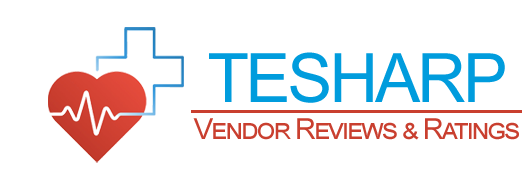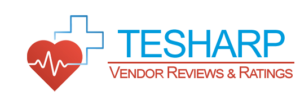The Process of Credentialing
Healthcare institutions should have staff bylaws that guide administrative processes that ensure that healthcare workers provide competent and safe care.
All healthcare workers should understand that practicing clinical medicine is a privilege, and it goes hand-in-hand with first being credentialed. After the individual is credentialed, the next step is to address the privileges of practice, which depend on the evaluation of the provider’s clinical qualifications, training, and overall performance. For privileges and credentialing, the bylaws should address the following:
-
The pre-application process to screen if a healthcare professional satisfies the basic criteria for working in the hospital
-
Establish grounds for denying applications after the pre-application process
-
Establish a process where the rejected healthcare worker can re-apply after the initial denial
-
Have a process for rapid credentialing for locums, emergency staff, and short-term employment
-
Have steps in place to limit the practice of medicine for those healthcare workers who do not follow guidelines or the standard of care is not satisfactory
-
How to grant temporary privileges: Sometimes, an outside medical or surgical specialist may be asked to offer advice or perform a life-saving procedure. In such scenarios, the bylaws should be able to accommodate them.
-
Granting emergency privileges to healthcare professionals in times of disasters (for example, during floods or earthquake, there may be an urgent need to have the staff to look after the patients.
-
Establish a code of conduct rules for a healthcare worker who gets credentialed and the penalties for disregard
-
Granting privileges with shadowing: Many times, physicians and surgeons from outside the United States may have different training. Before granting full privileges, these healthcare workers may need shadowing or proctoring for a few weeks or months. For example, many hospitals have a process of proctoring surgeons in cardiac surgery to ensure that they know what they are doing.
Who Requires Credentialing?
In general, any licensed, independent healthcare professional who has been permitted by law and regulated by a licensing organization to provide services and care without supervision or direction within the scope of the individual’s license needs to be credentialed. While every state has unique laws regarding medical practice, simply having a healthcare profession license does not mean one can provide any medical service they want. For example, an advanced nurse practitioner cannot independently start prescribing medications, or a family physician cannot begin inserting central lines. Even independent nurse practitioners have to follow specific rules, and in certain states, they work under a physician. Simply being licensed does not mean healthcare professionals are at liberty to perform all types of clinical services. Every healthcare worker has a role to play, and once a license is obtained, they can only perform a function for which they are granted privileges.
Privileging is the process whereby a healthcare worker is authorized to perform a specific set of patient care services based on an evaluation of the individual’s credentials and performance. A “privilege’ is defined as a benefit that is not available to all healthcare workers.
Agencies that Verify Credentials
Today there are several agencies and organizations that check the primary sources for verification of credentials (Anon, 2018; Epstein & Epstein, 2012). Some of these include the following:
National Practitioner Data Bank: The NPDB is a US government program that gathers data and provides it to authorized users. The data collected includes negative complaints, malpractice cases, awards, loss of privileges, loss of professional society membership, suspension of license, revocation of a license, or expulsion from participation in Medicaid or Medicare programs. The NPDM was created by Congress to protect the public and decrease healthcare fraud and abuse. The NPDB is managed by the Bureau of Health Workforce and Health Resources and Services Administration.
Data from NPDM is only available to healthcare workers, hospitals, professional societies, and licensing agencies or contractors who administer federal care programs. Individual healthcare providers can obtain access to their own records by paying a small fee. When applying for a license in many states, one has to submit the NPDB data.
The American Board of Medical Specialties (ABMS) was established in 1933 and is a non-profit organization representing 24 broad disciplines of medicine. The board functions to maintain a rigorous process or evaluation of board certification of American physicians. ABMS certifies over 150 medical specialties. The board also collaborates with other professional medical agencies and organizations to set standards for residents and accreditation of residency programs. The information on ABMS is available to the public.
American Association of Nurse Practitioners (AANP)/American Nurses Credentialing Center (ANCC) are two separate agencies that also verify if the nurse is board certified.
Sanctions and Exclusions
The Office of Inspector General (OIG) and the System for Award Management (SAM) are two agencies that also help verify if healthcare providers have any restrictions/sanctions against their medical license that may limit their ability to practice clinical medicine.
State License Verification Websites
Each state has a medical board that operates a license verification program. These are further separated into nursing, dental, podiatrists, doctor of osteopathy, and physicians/physician assistants.[8]
The Legal Issues
All healthcare institutions that develop written policies that govern credentialing and privileges must consult with legal counsel to ensure that the policies abide by state laws and professional organization and federal requirements. The institution must also ensure that credentialing is a fair, unbiased process, and there is a method for review of any grievances.
Identification of the Applicant
With every application, the healthcare worker must supply some type of government-issued identification and a photograph. In fact, many hospitals now require that the photograph is stamped and notarized. When the hospitals request references, they should send the applicant’s photo identification together with the request to ensure that the applicant has not been misusing someone else’s identification.
Background check: Today, most healthcare institutions perform a background check on all applicants. A background check may reveal any criminal or domestic violence at both the state and federal levels. Some states recommend that hospitals also request that applicants provide a copy of the police report.
Processing of the Application
Once the applicant’s application is received and approved, the healthcare provider can request privileges.
Credentialing for Special Circumstances
Providers of Telemedicine
As healthcare delivery evolves, some physicians are now allowed to practice telemedicine, but within reason. Sometimes radiologists support emergency rooms by reviewing CT scans or questionable x-rays done in the middle of the night. In fact, the Centers for Medicare and Medicaid Services are now permitting healthcare institutions whose patients are receiving telemedicine services to grant privileges and credentialing to some physicians providing ambulatory surgery care and teleradiology. It should be understood that most licensing boards do not permit the prescription of controlled substances or examining patients via telemedicine. The hospitals must have a specific standard regarding the practice of telemedicine because it has the potential for abuse. Many insurers and state licensing boards only agree to the practice of telemedicine with oversight to ensure that patients are receiving appropriate care.

